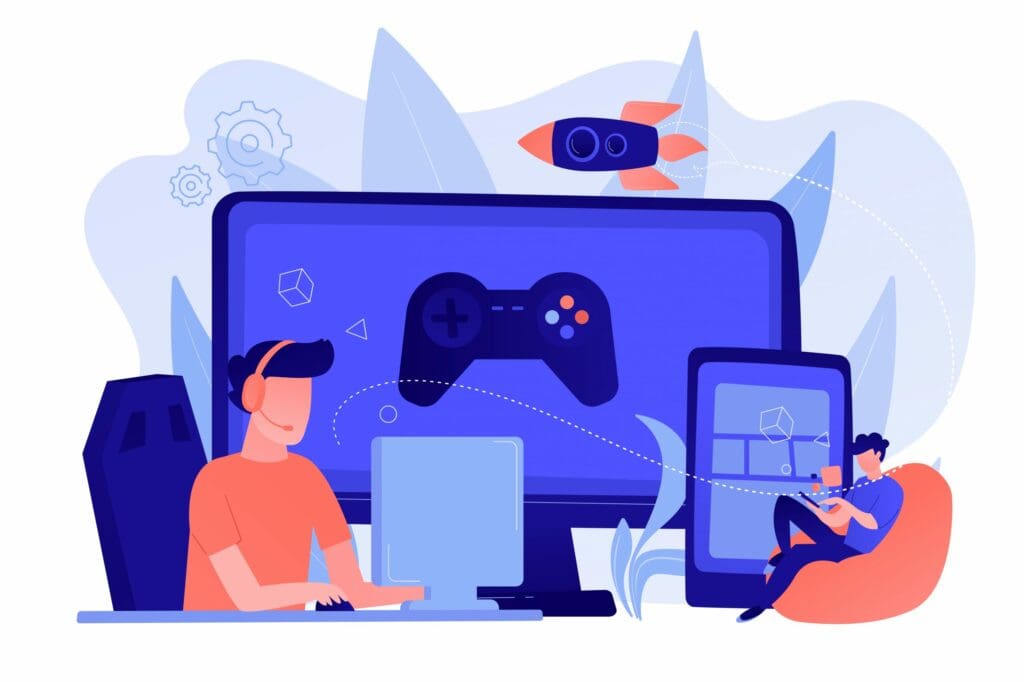Introductions
The intersection between gaming and violent extremism remains understudied and, often, its conclusions tend to be prematurely and problematically drawn. The overused tropes that gaming leads to violent behaviour or that all gamers are extremists, are just a few. This is not to say that the gaming space is without fault. Violent extremists are certainly attempting to exploit the gaming landscape hoping to capitalise on the massive, youthful audience and the gaming world’s deep integration within popular culture. But, this is not illustrative of a direct link between videogames, violence and ultimately radicalisation. Instead gaming has been co-opted by violent extremists as a tool to radicalise and recruit young people, and bring already radicalised people together, which is very different. Understanding this difference is crucial for practitioners as it enables us to develop our own gaming-methodologies to counter this vulnerability.
The use of games in intervention campaigns has grown in popularity over the last five years. There are now many examples of games being designed to combat different types of online harm from violent extremism, genderbased violence, to dis/misinformation. These games vary considerably in terms of style and design, from scenariobased to fictional and cartoon to actors. However, they all share the same function: Games create an opportunity to test how turning passive consumption of counter-content into active engagement may potentially improve the success of that intervention.
Since 2019, Moonshot has been developing and testing gamified content to advance media literacy in Indonesia. The game design is based on the inoculation method – which suggests that psychological resistance to disinformation can be developed by exposing individuals to weakened versions of fake or manipulated stories that they will come across in the real world. The purpose is to better equip them with the media literacy skills necessary to identify disinformation, both online and offline.
Designing the Game and its Implementation
The game we have designed revolves around a group chat platform, developed to look like WhatsApp, but renamed ‘Gali Fakta’ – meaning ‘Dig for the facts’. This format was created to reflect the real-world nature of how disinformation spreads in Indonesia. Family chats were reported to be the second most common place where disinformation is shared after Facebook.
The player has the job of fact-checking the articles and social media posts shared in the group chat by their family members, deciding whether to intervene and how to correct the family member if the information they shared is indeed fake. The game script transposes multiple such lessons, including how to identify when you are in an echo chamber, how to spot a fake social media account, and how to tell a reliable source from an unreliable one. Correct answers are rewarded by points and validation. Incorrect answers are docked points and met with general confusion or upset by family members.
The Preliminary Findings
We discovered through the pilot run of our campaign that game-based content led to higher audience engagement levels compared to alternative digital intervention methodologies, such as YouTube videos, quizzes or an interactive website. Game players spent approximately 12 times as long engaging with the media literacy content in the pilot game compared to those who visited our intervention website without playing the game. This clearly demonstrates the utility of game-based methodologies to engage our target audiences and is an important stepping stone towards understanding gaming’s various applications to communicate, engage and advocate.
“Our gaming methodologies programme has been extended to enable further adaptation, testing and opportunity to advance media literacy online. We are currently modifying the game so that it can be deployed in other geographical contexts and languages. We hope in the future it could even support interventions addressing other forms of online harm. Although it currently lives inside the family chat format, we would like to pull out chapters of the game to form individual media literacy lessons that would be quick for the user to consume and then run those as interactive campaigns in their own right.”
Games and gaming communities already contribute to social good in our society in so many different ways. Utilising those natural aspects of gaming which make them so successful allows us as practitioners to transfer them over into an effective method of combating online harm.
Katie Passey works on the design and delivery of digital counter-messaging and intervention projects at Moonshot, specialising in the monitoring and evaluation of online at-risk user activity. Her work includes: CVE, extremism, radicalisation, M&E, jihadism, violent far-right, dis/misinformation, gaming, social media and technology.
This article is part of the RAN Spotlight series (June 2023) looking at the nexus between gaming and extremism.
Image Credit: Freepik
Want to submit a blog post? Click here.
